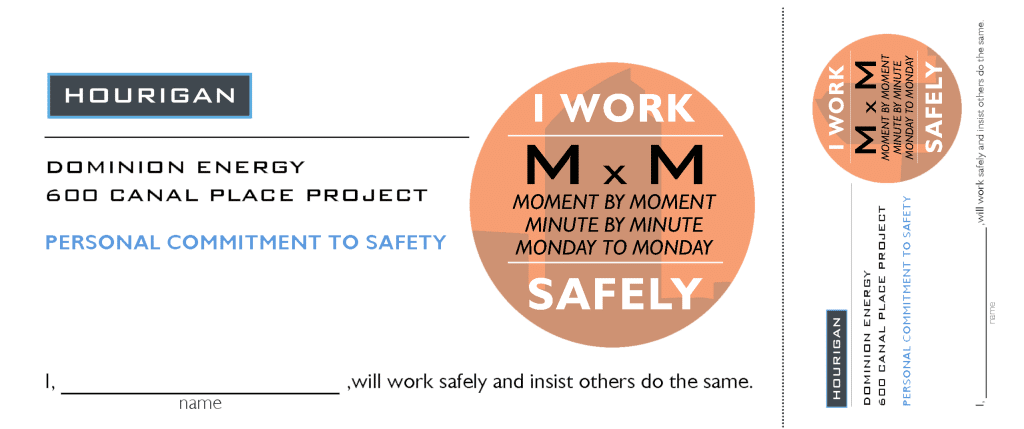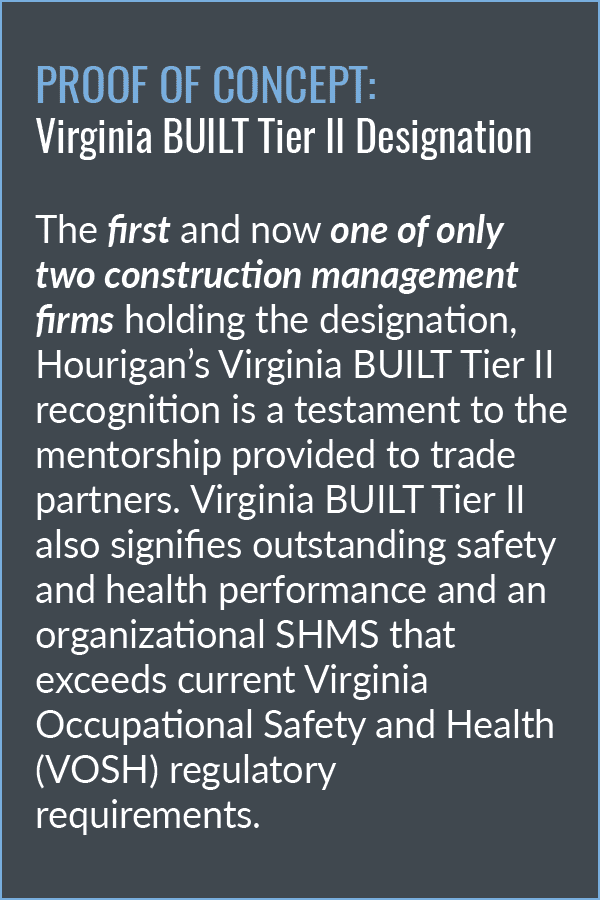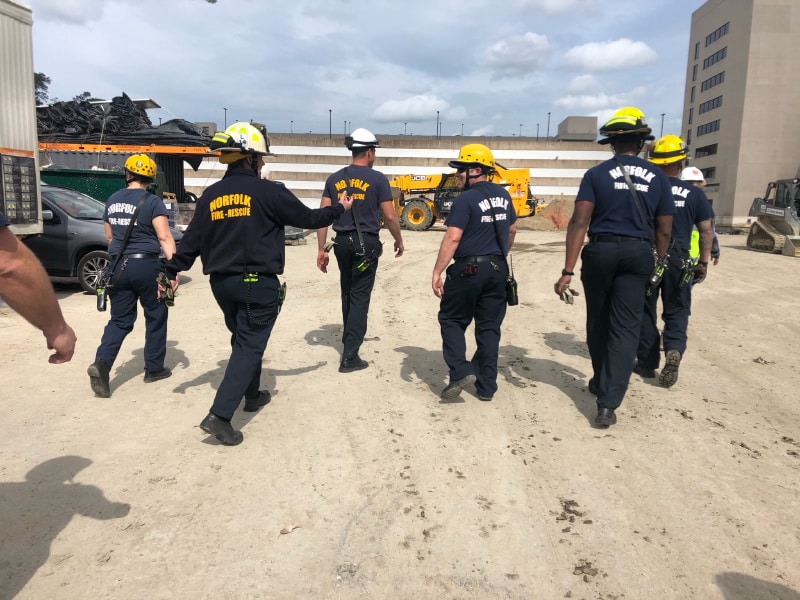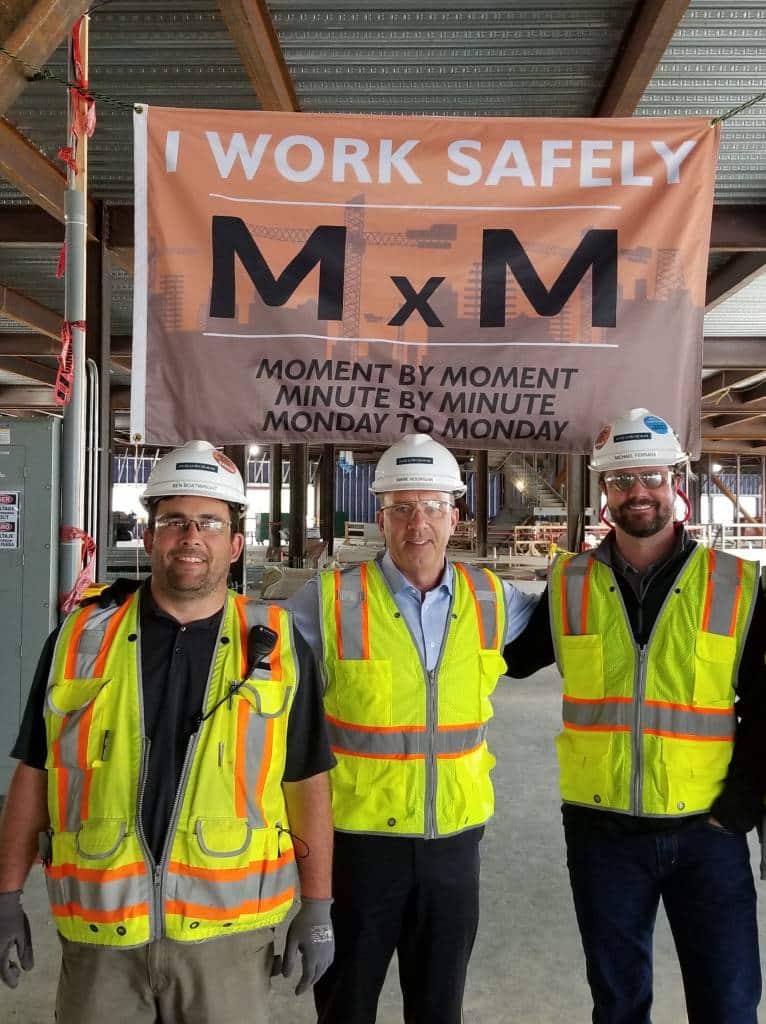According to the U.S. Bureau of Labor Statistics, the construction industry realized the most fatal work injuries (1,008) of all other industries in 2020—a total 25% higher than the next highest industry (transportation/warehousing). It is a necessity that construction management firms commit to the protection and value of human life.
Hourigan’s Safety and Health Management System (SHMS) is representative of this critical commitment. As a professional services provider, Hourigan is highly attuned to the fact that people are the organization’s sole asset. The SHMS sets the tone for the organization, with the six tenets of: Commitment, Participation, Hazard Identification and Control, Education and Training, Communication, and Owner and Client Involvement.
Buy-In at Every Level
Safety is not just a program, but a commitment to the community and those who work for and around construction operations.
“It comes from the top down. If it’s important to the foreman, it’s important to the crew.”
Corporate Safety Director Kurt Dunmire was drawn to Hourigan because of the commitment to safety that pervades every level of the organization. “I recognized a shared goal that everyone, from Mark Hourigan down, takes very seriously on a daily basis.”
It is simple—value the human elements and strive to provide a safe working environment for all stakeholders involved both directly and indirectly with the project effort. Everyone deserves to return to their families with an equal or better level of health and safety understanding than they arrived with.
Foundational Elements of An Effective Safety Culture
COMMITMENT. Protecting the health and safety of employees on the job site is a full-time commitment. A dedicated business unit of safety professionals is beneficial in ensuring that information and support reaches operations teams. By partnering with site teams, expert support and resources drive critical safety programs and integrate principles into daily practice on the site to achieve regulatory compliance and beyond.
Commitment should come not only from the top down but should also be reflected in the assigned labor force. This begins in preconstruction. Through a stringent annual prequalification process, likeminded trade partners are selected, with a focus on those organizations’ safety records. An emphasis on subcontractor safety qualifications and performance yields a high level of confidence in a safe working environment.
PARTICIPATION. Participation is, of course, a critical component to the SHMS every moment of every day. Beyond the foundational risk assessment of trade partner prequalification, everyone assigned to a job site must understand the potential hazards and the general safety rules that must be observed. Mandatory site-specific safety orientation with supporting documentation is an effective accountability tool to ensure a continuous safety mindset. Numbered hard hat stickers that serve as permission to work on site serve as documentation, as well as tracking of individuals, should the need arise for coaching or corrective action. Additionally, more visible documentation is frequently used to ensure self- and team-accountability.
Mass participation is also the best way to catch minor safety infractions before they become recordable incidents. According to Kurt and his team, “We need extra sets of eyes, not only from the Hourigan team, but from our trade partners as well. Safety is everyone’s responsibility – if you see something, say something.”

HAZARD IDENTIFICATION AND CONTROL. Risk mitigation is a critical step in preventing incidents. Identifying potential threats early and addressing them head on greatly reduces the occurrence of safety issues. Weekly safety observation reports document incidents and any actions taken. Holding site teams accountable for this process instills a sense of ownership among the team.
Monitoring adherence to safe work is an ongoing job, spearheaded by site teams and safety specialists.
In addition to weekly safety observations, proactive pre-task analysis meetings are required with each trade before their work may begin. The safety team also performs comprehensive monthly safety and health audits to rate the performance of the site.
As explored below, education and training efforts are proactive to ensure every worker fully understands the nature of the hazards they work with and how to keep themselves and those around them safe. However, there is sometimes a need for coaching and corrective action. Leading with empathy and scaling the response to the infraction generates expected outcomes going forward. For those safety infractions that cause imminent danger, a zero-tolerance policy is essential; disciplinary action should be swift and definitive, including multi-day suspension from site or permanent removal from all projects.
EDUCATION AND TRAINING. As the industry continuously evolves its methods, materials, and technology, a structured, ongoing education and training program is a necessity to keep workers safe. Specialized safety training is conducted daily at job sites by dedicated safety professionals. Additionally, safety supervisors are alerted to potential safety hazards that may necessitate certain types of training. Safety Toolbox Talks, focused on a specific area of concern or risk present on the job site, are held weekly to ensure continuous awareness.

COMMUNICATION. Setting clear expectations with teams and trade partners is absolutely key. Communication on a job site takes many forms, from the aforementioned safety training to site-specific signage. QR codes have become prevalent on site to communicate a variety of messages, as well as provide accessibility to required documentation. Internal team and trade partner communication is a crucial piece of any job, but especially when the health and lives of workers hang in the balance.
Communicating the hazards of an active construction site with the surrounding community is an additional facet of a successful safety communication strategy. This may present in the form of town halls with neighboring businesses/residents and clear and visible directional signage where needed. Inviting local emergency services personnel to engage with operational teams on active construction sites is a best practice to enhance community safety, as well as worker safety.

OWNER AND CLIENT INVOLVEMENT. Remarkable relationships start with remarkable buildings and the example set on site. The construction site is a reflection of the future building’s owner, which means that encouraging a robust safety program is also of benefit to the owner. Kurt also notes that, “We, as construction managers, should aim to guide owners to consider safety systems during design of their buildings. It’s just the right thing to do.”
What It All Means
Certainly, lapses in working safely have a ripple effect—from the directly affected individual(s) to their families, friends, coworkers, the owner, and the individual’s company. Severe injuries and fatalities are a real concern on active construction sites. Therefore, it is the construction manager’s duty to instill a sense of accountability among the management team and trades to ensure everyone gets home safely at the end of the day.
On a micro-scale, stringent safety programs protect individual workers. On a macro-scale, stringent safety programs protect communities. Ultimately, this is the benefit of the recently implemented Virginia BUILT Tier II designation. The result of a partnership between Associated Builders and Contractors – Virginia Chapter (ABC-VA) and Virginia Occupational Safety and Health (VOSH), Virginia BUILT stands as a benchmark of excellence in the design and execution of a robust safety program.
This mark of safety maturation benefits every organization that a construction management firm touches, including subcontractors and clients, as construction work progresses dependably and negative publicity is minimized, if not eliminated entirely.
In short, proactive risk management lessens the occurrence of safety incidents, increases employee morale, increases construction efficiency, and ultimately, results in a better product for clients.
